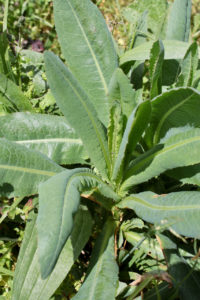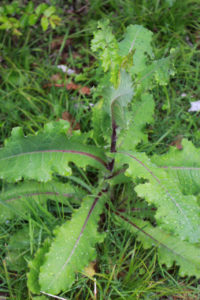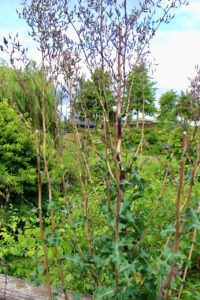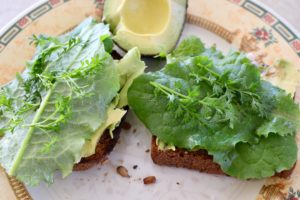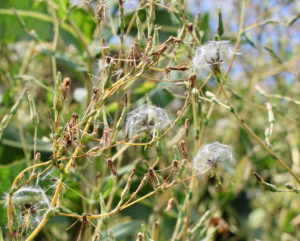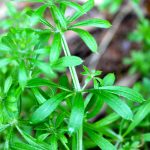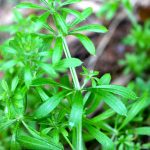 Wandering into the garden to pick and then eat lettuce plants I’ve grown from seed is very satisfying. Everybody is familiar with mild tasting, juicy lettuce. They’re such a convenient size and shape to put on a sandwich or in a burger or have in salads. But have you any idea of the history of lettuce or that there are wild lettuces growing quietly all around us?
Wandering into the garden to pick and then eat lettuce plants I’ve grown from seed is very satisfying. Everybody is familiar with mild tasting, juicy lettuce. They’re such a convenient size and shape to put on a sandwich or in a burger or have in salads. But have you any idea of the history of lettuce or that there are wild lettuces growing quietly all around us?
Lettuces were farmed in Egypt originally as far back as 2680 BC The Egyptians selectively bred them from wild prickly lettuce into a food crop with succulent leaves and seeds rich in oil. Lettuce was considered a sacred plant and believed to enhance sexual stamina and its use in religious ceremonies is depicted in images on the walls of tombs and in paintings. The Egyptians passed lettuces on to the Greeks who around 50 AD shared them with the Romans.
The Roman Emperor Augustus reportedly built a statue of the physician who cured him of a disease by prescribing lettuce. While the disease nor the variety responsible for the cure is not mentioned it is probably again prickly lettuce Lactuca serriola a wild lettuce found scattered around New Zealand in our gardens, roadsides and wastelands. For centuries this ancestor of cultivated lettuce has been so greatly valued as a sedative and pain reliever that well into the nineteenth century, it was considered an opium substitute although non-addictive and known as poor man’s opium. The plant contains a milky white juice (latex) called lactucarium that solidifies and turns brown when exposed to air. All lettuces have this white sap but wild lettuces have a higher concentration of the medicinal alkaloids than garden lettuce. There are videos on Youtube on how to boil down the plant into a paste for pain relief.
Lactuca virosa or acrid lettuce (the sap smells very strong) is our second wild variety with bigger, wider leaves up to 25cm long and 18cm wide with
purplish veins and stems. The leaves can be regular or lobed like dandelion leaves. Prickly lettuce has slender pale green leaves and stems that follow the sun during the day giving it another name of ‘compass plant’. Both acrid
and prickly lettuce have stiff bristles on the vein running along the back of the leaves and on the slender, erect stems which can reach up to and over 2m tall supported by deep tap roots. Both are also annuals or biennial herbs with branched stems of bright yellow flowers, like mini dandelions, being in the same family. The plants spread by winged seeds.
In Medieval and Roman times prickly lettuce was eaten at banquets to prevent intoxication, new mothers have drunk the leaves as tea to promote lactation and the sap has been prescribed as a diuretic, appetite stimulant, as well as a soothing skin lotion. The leaves are very bitter so snails don’t touch them
but horses like them! If I gather a bunch of leaves like nasturtium, chickweed, rocket, bitter and garden lettuce the tastes all blend together to make a delicious open sandwich and I’m getting the benefit of a rich source of vitamin K, C and A as well as folate and iron. You can add young tender leaves of wild lettuce to salad or cook as a vegetable.
